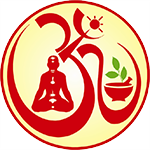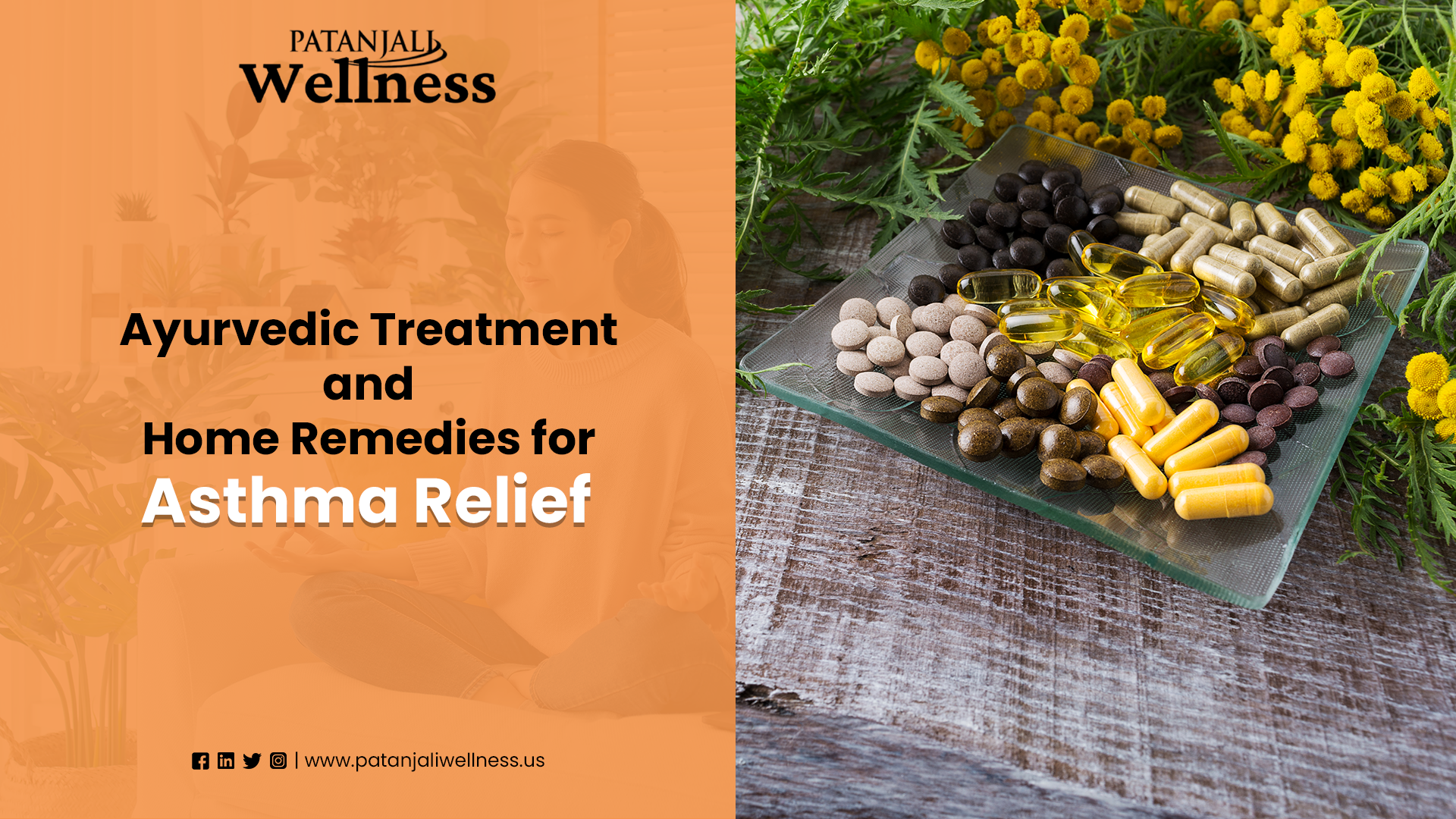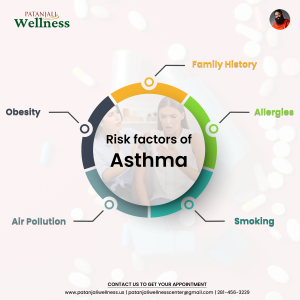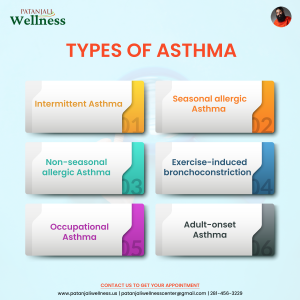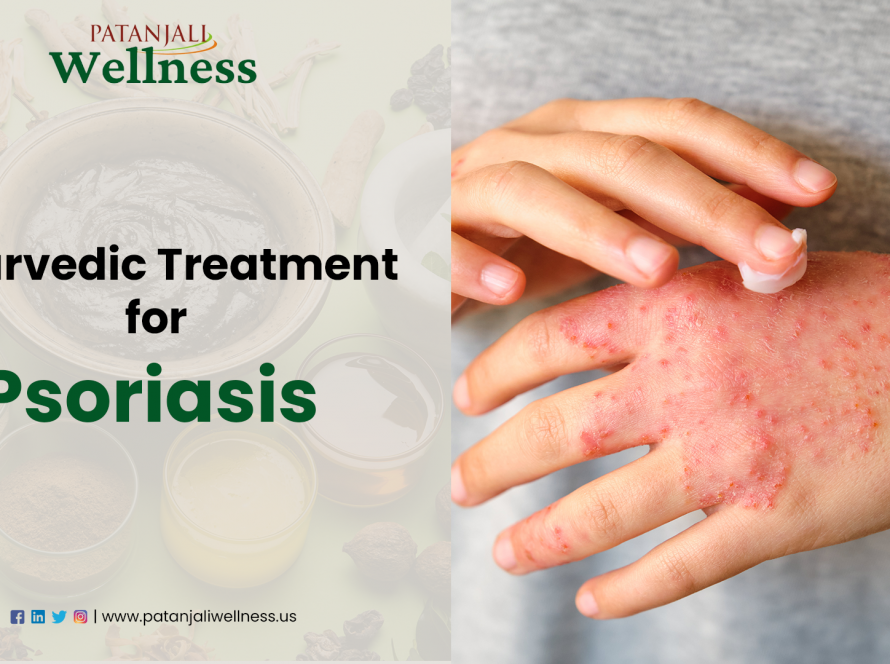What is Asthma?
Asthma, also known as bronchial asthma, primarily affects your lungs, constituting a chronic condition that does not dissipate quickly. Asthma treatment is a prolonged process; patients require time to eliminate it. For those exploring alternative approaches, considering Ayurvedic treatment for asthma can be insightful
In Asthma, the airways narrow and cause problems in passing the air out of the lungs. It is a breathing problem that causes coughing, wheezing, and shortness of breath.
For some, it can be a minor health issue, while for others, it can be a significant health issue that might later on cause an Asthma attack.
Asthma can not be cured but can be controlled with proper treatments. It is seen that Asthma occurs from time to time. Therefore, knowing its symptoms and finding the treatments before it gets triggered is essential. One can also go for natural Ayurvedic treatment for Asthma.
Risk factors of Asthma
Several risk factors might trigger Asthma, and some of them are:
Family History: Diseases are inherent from generation to generation. Therefore, a person with Asthma has more chances of the disease than those with no Asthma family history.
Allergies: A person with allergic conditions like dust mites, pollen, fur, mold spores, etc., has high-risk factors for asthma.
Smoking: Asthma is related to breathing, and people with smoking habits have a high risk of suffering from it.
Air Pollution: Polluted air gives rise to many toxic gasses, and that gas causes high-risk factors for asthma.
Obesity: Obesity in children or an adult has more chances of getting triggered by Asthma.
Types of Asthma
There are different types of Asthma. Different kinds of Asthma are classified by their symptoms and how often they occur. The following types have been identified:
Intermittent Asthma
For some people, Asthma attacks occur even though they don’t have any symptoms. Most of the time, Asthma symptoms go away on their own. Usually, the times when there are no symptoms last a long time. For these people, respiratory tract diseases caused by viruses, like the ones that cause colds, often set off their Asthma symptoms. Kids ages 2 to 5 are especially likely to get this because they can get 8 to 12 colds and coughs yearly. Some people with Asthma are set off by doing a lot of physical activity or exercise, being outside in cold air, or being around certain natural chemicals.
Seasonal allergic Asthma
People with seasonal allergic Asthma react to allergens like pollens that come out in the air during certain times of the year. Seasonal Asthma is also often caused by mold spores. To determine if you have this type of Asthma and to take the proper steps to avoid getting it, you should know how the weather and air allergen levels in your area change from season to season.
Non-seasonal allergic Asthma
Not everyone who has allergies also has Asthma, and not everyone who has Asthma also has allergies. But in some cases, allergies do make Asthma worse. Cold or dry air, dust, pet hair, or pollen can cause an Asthma attack. And there’s another kind of allergic Asthma where the causes don’t depend on the season. Instead, they may be caused by the airway mucosa reacting too strongly to things that aren’t ordinarily allergenic. There are many of these, such as viruses, allergens, or air pollutants like paint fumes or tobacco smoke, heavy exercise, some chemicals in food or drugs, and changes in the weather.
Exercise-induced bronchoconstriction (EIB)
This term is used when someone works out, and their airways get small. Up to 80% of people who have Asthma may have it. However, not all cases of EIB are found in people with Asthma. People think it’s because of the drying out and heating up that can happen when you do a lot of physical exercise in a dry climate. For kids with Asthma, this is often the first sign of the disease.
Some irritants people come into contact with while doing different sports are chlorine in swimming pools, air pollutants when jogging, running, or riding, cold, dry air during winter sports, and strong smells from chemicals or perfumes in a gym. Because EIB is temporary and can be treated, people with it shouldn’t be stopped from doing any physical exercise as long as it is appropriately managed.
Occupational Asthma
In other words, chemical allergens or dust in the air cause or worsen the symptoms. If you already have Asthma, this kind of contact can worsen it. If a patient’s first symptoms appear after moving jobs or changing jobs, if their symptoms get better after leaving work, or if they have trouble breathing because of chemicals at work, these could all be signs of Asthma. There are more than 250 things at work that can cause or make Asthma worse. As always, having Asthma or having a family history of Asthma raises the chance of this condition. So do smoking and having allergies in the person or their family. Bakers, people who make drugs and detergents, people who measure food, metal workers, lab workers, plastic workers, and woodworkers are all high-risk jobs.
Chronic Asthma
This disease is also known as persistent Asthma if the symptoms happen every day or a few times a week. Symptoms can vary significantly in how bad they are, but there are only short stretches with them. Acute flare-ups can happen at any time during the long-term course of the disease. In some cases, these can be linked to yearly rises in air allergens or viruses that swell the airways. Patients with chronic Asthma need to be correctly identified to implement the proper treatment plans.
Adult-onset Asthma
Asthma usually starts in youth, but for some people, the first signs don’t show up until they are adults. Many things could be to blame. Some people didn’t come into contact with things that might have made their Asthma worse until they were adults. They might be introduced to a house pet when a roommate brings one home, or they might start working in a place with chemical fumes, which sets off their latent hypersensitivity. A viral illness might even cause an Asthma attack in an adult for the first time.
Ayurvedic Treatment for Asthma
There are many ways to treat Asthma in both Ayurveda and modern medicine. In this section, we will talk in more depth about how to cure Asthma naturally in Ayurveda.
A person with Asthma can get better in two different ways. But everyone’s illness is different, which is why all of these things are thought about before an Ayurvedic treatment for Asthma is made. These are the two ways:
Purification Therapies
In Ayurveda, purification therapies are collectively known as “Panchakarma.” Panchakarma is a set of therapeutic procedures designed to purify the body, balance the doshas (biological energies), and eliminate toxins (ama) that may have accumulated. These therapies aim to restore the natural state of health and well-being. Panchakarma is often used to address various health conditions, including respiratory disorders like Asthma.
Oleation and Fomentation Procedures
Oil is a medicine in snehana, also known as oleation therapy. Oils like Narayana oil, Talispatra oil, and others are used to massage the outside of the body. The next step is internal oleation, which means the patient has to take in the oils. Pure or treated cow’s ghee is usually used as an oil for Ayurvedic treatment for Asthma in Ayurveda.
In the fomentation process, also called swedana, a steam box or panda sweda makes the person sweat. When you do panda sweda, you put hot rice and certain plants wrapped in a cloth on your body.
Ayurvedic remedies for Asthma
Here are some easy things we can do at home to treat Asthma:
Honey
Putting a bowl of honey under your nose and breathing in is the easiest way to calm down during an Asthma attack. Swallowing hot water mixed with one teaspoon of honey right before bed would also help a great deal with the buildup of phlegm in the throat.
Garlic Juice
Take 15 drops of freshly squeezed garlic juice mixed with warm water taken by mouth for instant relief. If you are in the early stages of Asthma, having a cup of milk boiled with five garlic cloves would stop the problem from worsening at night. You can also add a pinch of turmeric powder to the milk while cooking.
Vegetable Juice
To avoid Asthma, you should drink a glass of juice three times a day made up of one-third spinach or radish juice, two-thirds carrot juice, and a dash of cilantro juice.
Turmeric
Turmeric, also called haldi, is a powerful plant used in Ayurveda to make many different medicines. When you have an Asthma attack, your lung congestion gets worse. Eating half a teaspoon of turmeric powder with honey can help.
Neem
In many of its healing methods, Ayurveda says that neem can be used as medicine. A few drops of neem oil taken daily would help control the harmful effects of asthma.
Fig
Figs are great for getting rid of phlegm in the lungs. It would work if you ate four figs soaked overnight on an empty stomach first thing in the morning for at least two months straight. You can also drink the water that the figs were soaked in along with it to get the most out of it.
Fenugreek Seeds
If you mix 1 teaspoon of honey, 1 teaspoon of ginger juice, and 1 cup of water that the fenugreek was soaked in overnight and then eat it, it will help your Asthma. Take this mix every day, in the morning and at night, for the best effects.
Sesame Seeds
Putting warm oil on your chest and covering it with a warm cloth would help Asthma attacks immediately.
Black Pepper
Putting a paste of black pepper, butter, and turmeric powder on your chest and throat would also help soothe them.
Cinnamon Powder
After dinner, eating half a teaspoon of cinnamon powder and one teaspoon of honey would help you sleep well without worrying about shortness of breath from Asthma.
Ayurvedic Massage for Asthma
In Ayurveda, various massages can be tailored to address specific imbalances and health conditions, including Asthma. The choice of massage type often depends on the individual’s constitution (Prakriti) and the nature of the dosha imbalance (Vikriti). Here are some types of Ayurvedic massages that may be considered for Asthma treatment:
Abhyanga
Abhyanga is a full-body massage involving the application of warm herbal oil. It is a foundational Ayurvedic massage that promotes relaxation, improves circulation, and helps balance the doshas. While it is not directly targeted at Asthma, Abhyanga can contribute to overall well-being, which benefits individuals with respiratory conditions.
Pinda Sweda (Bolus Bag Massage)
In Pinda Sweda, a bolus bag containing herbal formulations or rice cooked with herbs is used for massaging the body. This type of massage can benefit individuals with Asthma, as the warmth and herbs used in the bolus can help relieve congestion and support respiratory health.
Udvartana
Udvartana involves the application of herbal powders mixed with oil to the body. It is a dry massage that exfoliates the skin stimulates circulation, and helps balance Kapha dosha. Udvartana can be beneficial for managing conditions associated with excess Kapha, including respiratory issues like Asthma.
Vishesh Abhyanga
Vishesh Abhyanga is a more intense and focused form of Abhyanga, with increased pressure and attention to specific areas. This Ayurvedic massage for Asthma can be adapted to address muscle tension and congestion in the chest and upper back, supporting respiratory health.
Nasya (Nasal Massage)
Nasya combines herbal oils or medicated substances in the nasal passages. While not a traditional massage, Nasya can be considered a localized massage for the nasal area. It is believed to clear congestion and balance Kapha dosha in the respiratory system.
Kati Basti (Warm Oil Therapy for the Lower Back)
Kati Basti involves creating a dam-like structure on the lower back with dough and filling it with warm herbal oil. While it primarily addresses lower back issues, the warmth from Kati Basti can extend to the respiratory region, providing relief and promoting relaxation.
Greeva Basti (Warm Oil Therapy for the Neck)
Greeva Basti focuses on the neck region, and warm herbal oil is poured into a well created with dough. It can be beneficial for relieving tension in the neck and upper back, potentially contributing to improved respiratory function.
Conclusion:
It’s important to note that this Ayurvedic treatment for Asthma should be undertaken under the guidance of a qualified Ayurvedic doctor who can customize the approach based on an individual’s unique constitution and health condition.
Additionally, Ayurvedic massages are typically part of a broader treatment plan that includes dietary and lifestyle recommendations, herbal remedies, and other Ayurvedic practices. Individuals with Asthma should consult with their Ayurvedic doctor and conventional healthcare provider to ensure a comprehensive and safe approach to managing their condition.
To connect with Ayurvedic doctors with immersed knowledge of Ayurvedic treatment for asthma, reach out to Patanjali Wellness Center in Houston.
